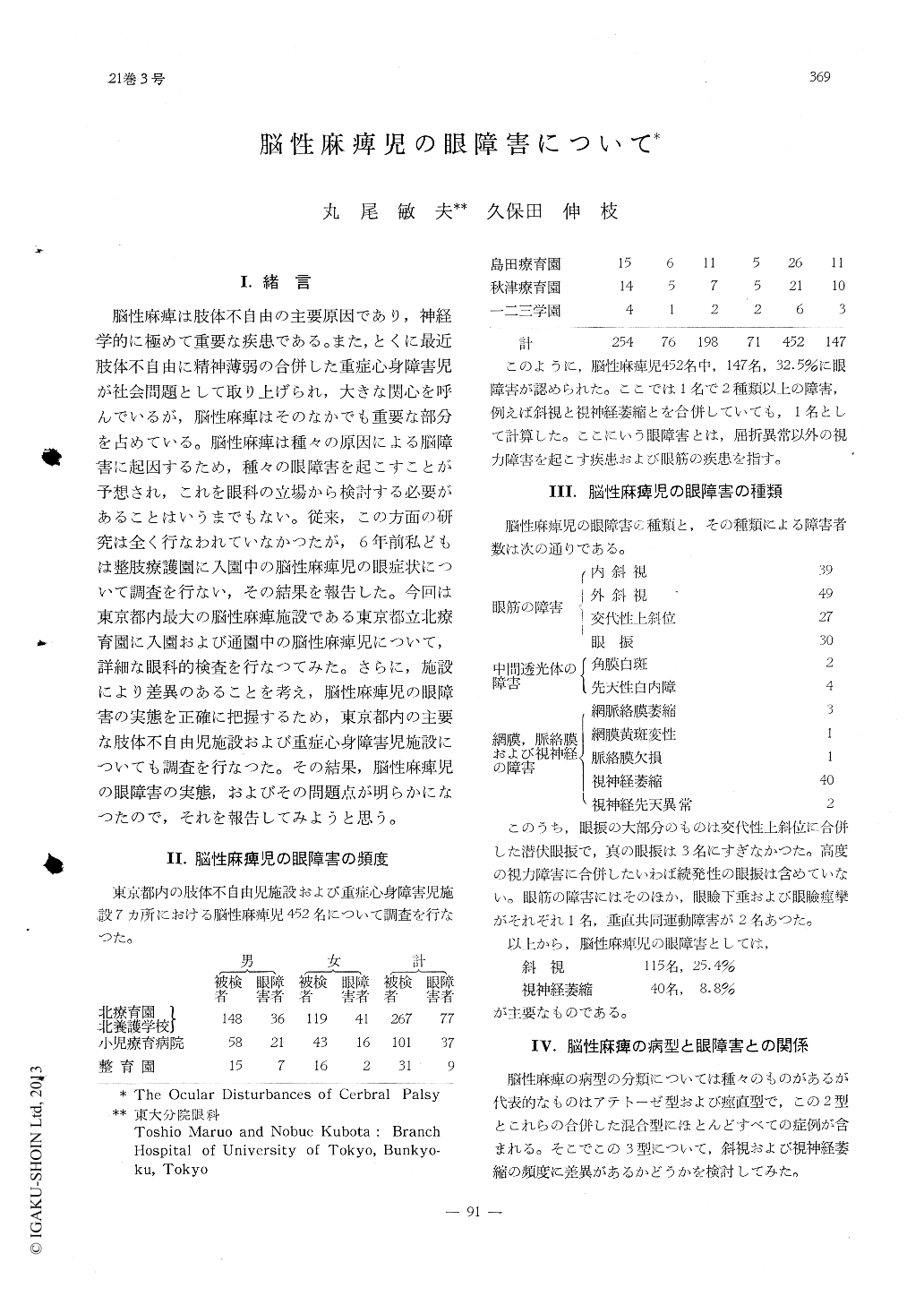Japanese
English
- 有料閲覧
- Abstract 文献概要
- 1ページ目 Look Inside
I.緒言
脳性麻痺は肢体不自由の主要原因であり,神経学的に極めて重要な疾患である。また,とくに最近肢体不自由に精神薄弱の合併した重症心身障害児が社会問題として取り上げられ,大きな関心を呼んでいるが,脳性麻痺はそのなかでも重要な部分を占めている。脳性麻痺は種々の原因による脳障害に起因するため,種々の眼障害を起こすことが予想され,これを眼科の立場から検討する必要があることはいうまでもない。従来,この方面の研究は全く行なわれていなかつたが,6年前私どもは整肢療護園に入園中の脳性麻痺児の眼症状について調査を行ない,その結果を報告した。今回は東京都内最大の脳性麻痺施設である東京都立北療育園に入園および通園中の脳性麻痺児について,詳細な眼科的検査を行なつてみた。さらに,施設により差異のあることを考え,脳性麻痺児の眼障害の実態を正確に把握するため,東京都内の主要な肢体不自由児施設および重症心身障害児施設についても調査を行なつた。その結果,脳性麻痺児の眼障害の実態,およびその問題点が明らかになつたので,それを報告してみようと思う。
Ophthalmological investigations were condu-cted on 452 cases of cerebral palsy accommo-dated in institutions for physically handicap-ped children. Ocular disturbances were detected in 143 cases (32.5%). Strabismus was the most frequent condition (115 cases, 25.4%), followed by optic nerve atrophy (40 cases, 8.8 %). The strabismus was often found in sub-jects of premature birth and in those of spastic type of cerebral palsy, while optic atrophy was a usual concomitant feature of mental defici-ency. Essential amblyopia, or visual disturbance without any organic lesions, was not encoun-tered in any of the studied subjects.

Copyright © 1967, Igaku-Shoin Ltd. All rights reserved.


